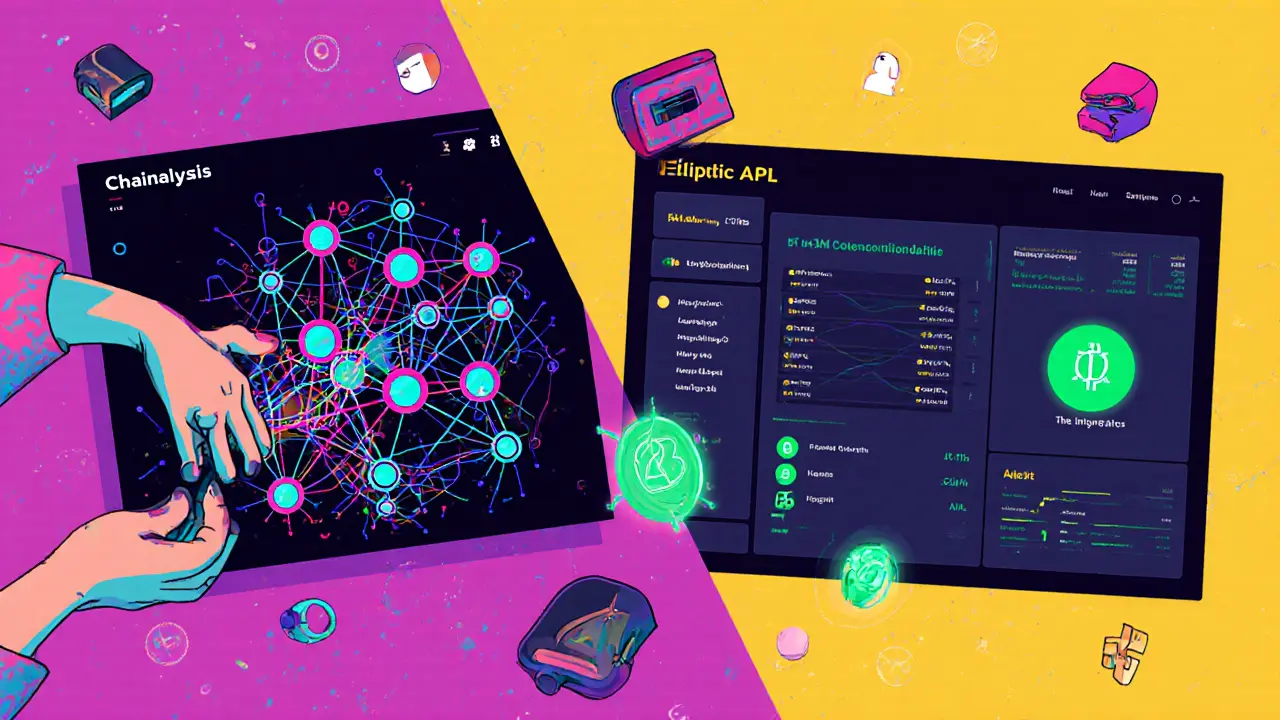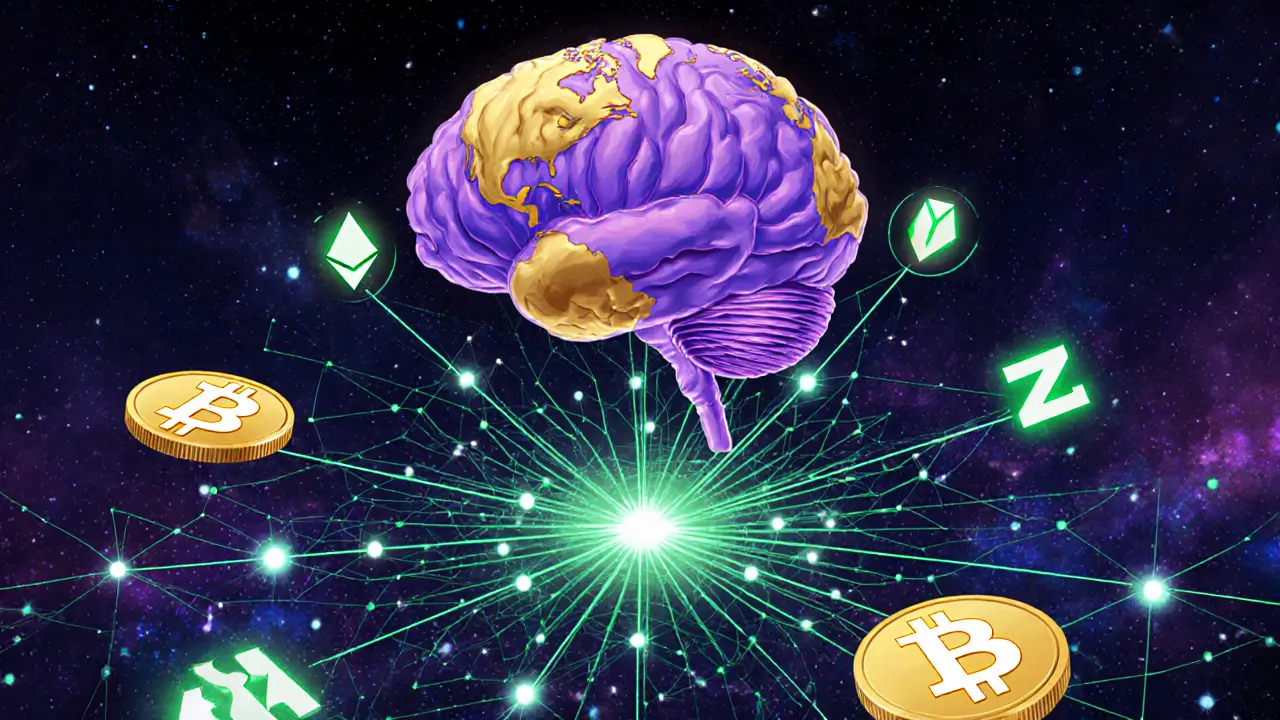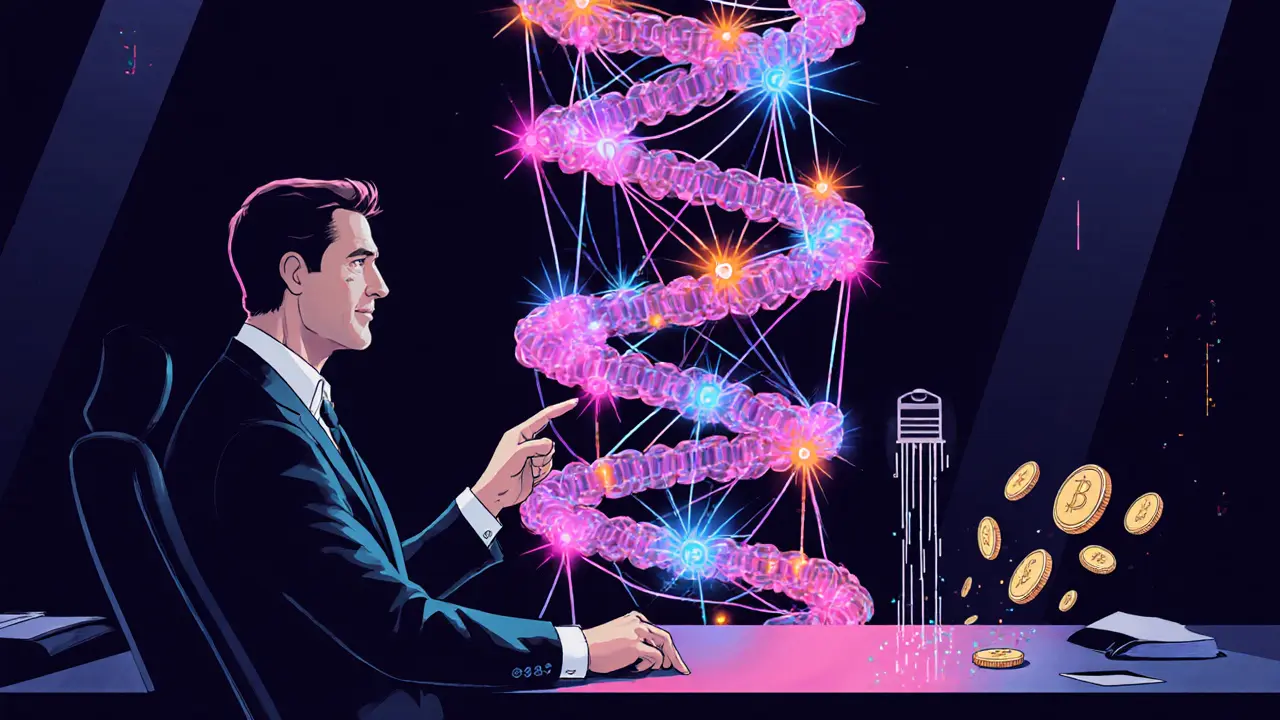Blockchain Forensics Tool Selector
Which blockchain forensics tool fits your needs?
Answer 3 key questions to get a personalized recommendation based on your organization's requirements.
Quick takeaways
- Chainalysis shines in large‑scale investigations and visual network analysis.
- Elliptic offers broader asset coverage and predictive risk scoring.
- Both platforms need solid onboarding and continuous rule tuning.
- Choose based on your primary use‑case: deep forensic work or real‑time compliance across many tokens.
If you’ve ever wondered how law‑enforcement or a bank can follow the money on a public ledger, the answer lies in blockchain forensics tools. Two names dominate the space - Chainalysis is a blockchain analytics firm that offers the Reactor and KYT suites, while Elliptic provides a full‑stack AML API and predictive modules. Both were founded in 2013 and have become the go‑to solutions for tracing crypto transactions.
How blockchain forensics works
Even though blockchains are public, the address strings hide the real‑world owners. Forensics platforms scrape every block, enrich each address with data from exchanges, mixers, and DeFi protocols, then apply clustering algorithms to group related wallets. Machine‑learning models assign risk scores based on transaction patterns, counter‑party reputation, and known illicit activity. The output is a set of alerts, visual graphs, and actionable reports that compliance teams can act on instantly.
Chainalysis capabilities
Chainalysis Reactor is the visual investigation engine. Users drag‑and‑drop nodes to see how funds moved from a suspect address through mixers, decentralized exchanges (Decentralized Exchanges), and ultimately into cash‑out points. The platform claims coverage of about 85% of market value and constantly adds new token support.
Chainalysis KYT (Know Your Transaction) runs in real time. Every incoming transaction gets a risk score based on historical patterns, exposure to known illicit services, and the reputation of the sending address. Enterprises plug KYT into their payment rails via an API, and the system can block or flag a transfer before it settles.
Key strengths of Chainalysis:
- Deep visualization that helps investigators tell a story in court.
- Strong government adoption - Europol, US Treasury, and many national police forces rely on it.
- Robust integration ecosystem for exchanges and large financial institutions.

Elliptic capabilities
Elliptic’s platform is built around a configurable AML API. It ingests transaction data, applies more than 10 billion data points, and returns a risk rating that can be tuned to a firm’s appetite. Unlike Chainalysis, Elliptic can score a transaction **before** it lands on the blockchain, giving institutions a chance to reject risky transfers pre‑emptively.
Elliptic also excels with privacy‑focused assets. It monitors Zcash (ZEC) and Horizen (ZEN), provides detailed mixer analytics, and tracks activity on emerging DeFi protocols. Its predictive engine flags addresses that are likely to become high‑risk based on early transaction behaviour.
Key strengths of Elliptic:
- Coverage of over 100 digital assets, representing 97% of the crypto market.
- Advanced predictive scoring that alerts you to emerging threats.
- On‑site training and certification programs that help teams get up to speed quickly.
Head‑to‑head comparison
| Feature | Chainalysis | Elliptic |
|---|---|---|
| Primary products | Reactor (visual investigations), KYT (real‑time monitoring) | AML API, Predictive risk engine, Compliance dashboard |
| Asset coverage | ~85% of market value (focus on major coins) | 100+ assets, 97% of market, includes privacy coins |
| Government adoption | High - US Treasury, Europol, FBI | Growing - UK FCA, Australian AUSTRAC |
| Visualization | Advanced network graphs, address clustering | Standard dashboards, less granular visual detail |
| Predictive analytics | Basic risk scoring | Advanced predictive models, early‑warning alerts |
| Training & certification | Online courses, limited in‑person | Extensive on‑site programs, certification tracks |
| Support for DeFi & cross‑chain | Expanding support for major DeFi protocols | Broad DeFi coverage, cross‑chain analytics roadmap |

Choosing the right tool for your organization
Ask yourself three quick questions:
- Do you need deep forensic visualizations for case work or courtroom evidence?
- Is your portfolio limited to Bitcoin/Ethereum, or does it span many altcoins and privacy assets?
- Do you want real‑time alerts only, or also predictive insights that stop bad transactions before they hit the chain?
If the answer to #1 is yes, Chainalysis’ Reactor is hard to beat. If #2 and #3 lean toward broader coverage and early‑risk detection, Elliptic’s API suite will feel more natural.
Both platforms require a solid data pipeline - think high‑throughput servers, secure API keys, and a team that can interpret risk scores. Expect a few weeks of onboarding for basic alerts, but reaching expert‑level investigative speed can take months of training.
Implementation tips and common pitfalls
- Start small. Deploy a pilot on a single wallet or transaction type before scaling.
- Align risk thresholds with your regulator’s AML expectations - too low and you’ll drown in false positives; too high and you miss true threats.
- Invest in continuous rule updates. Criminals adapt fast, and both platforms release new detection patterns regularly.
- Document every alert and investigation. This creates an audit trail that satisfies compliance auditors and law‑enforcement requests.
- Don’t forget internal training. Even the best dashboard is useless if staff can’t read the graph or understand a risk score.
Future trends in blockchain forensics
Both companies are pouring resources into AI‑driven analytics. Expect deeper cross‑chain tracing as assets move between Bitcoin, Ethereum, and newer Layer‑2s. Regulatory frameworks like the EU’s MiCA will likely mandate real‑time monitoring for all crypto service providers, pushing demand for tools that can certify compliance automatically.
DeFi’s rapid growth means future forensics tools will need to map smart‑contract interactions at scale. Privacy‑coin innovations (e.g., zero‑knowledge proofs) will challenge current clustering methods, prompting vendors to develop new cryptographic de‑anonymization techniques.
What is the main difference between Chainalysis Reactor and KYT?
Reactor is a visual investigation tool for deep forensic analysis, while KYT provides real‑time transaction monitoring and risk scoring.
Can Elliptic detect privacy‑coin transactions?
Yes, Elliptic monitors Zcash and Horizon, and it offers mixer analytics to trace funds moving through privacy networks.
Which platform is better for a small crypto exchange?
For a small exchange, Elliptic’s API is often more affordable and offers broader asset coverage, while Chainalysis may be overkill unless you need courtroom‑ready visual evidence.
How long does it take to get up and running?
Basic alerting can be live within a few weeks, but mastering advanced investigative features usually needs several months of training.
Do these tools comply with EU’s MiCA regulation?
Both vendors are actively updating their platforms to meet MiCA’s AML reporting requirements, and many early adopters have already passed compliance audits using their solutions.

Write a comment